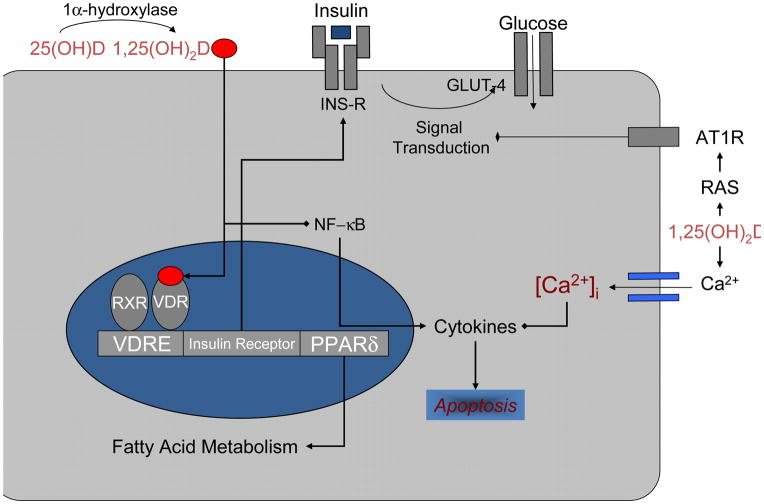Figure 2.
Vitamin D and insulin action. In peripheral insulin-target cells, vitamin D may directly enhance insulin sensitivity by stimulating the expression of insulin receptors (INS-R) and/or by activating peroxisome proliferator-activated receptor (PPAR-δ), a transcription factor implicated in the regulation of fatty acid metabolism in skeletal muscle and adipose tissue. The effects of vitamin D may be mediated indirectly via its important and well-recognized role in regulating extracellular calcium (Ca2+), calcium flux through the cell and intracellular calcium (Ca2+)i. Vitamin D may promote beta-cell survival by modulating the generation (through inactivation of nuclear factor-kB [NF-kb]) and effects of cytokines. Vitamin D may also affect insulin resistance indirectly through the renin-angiotensin (AII)-aldosterone system.

